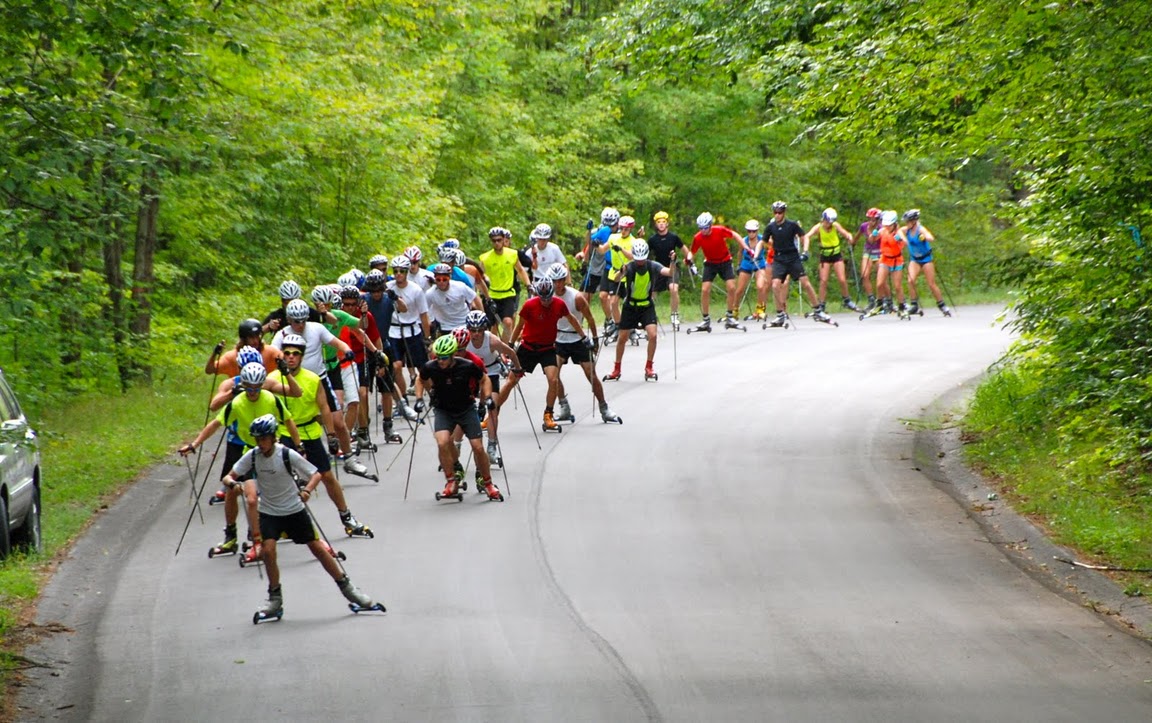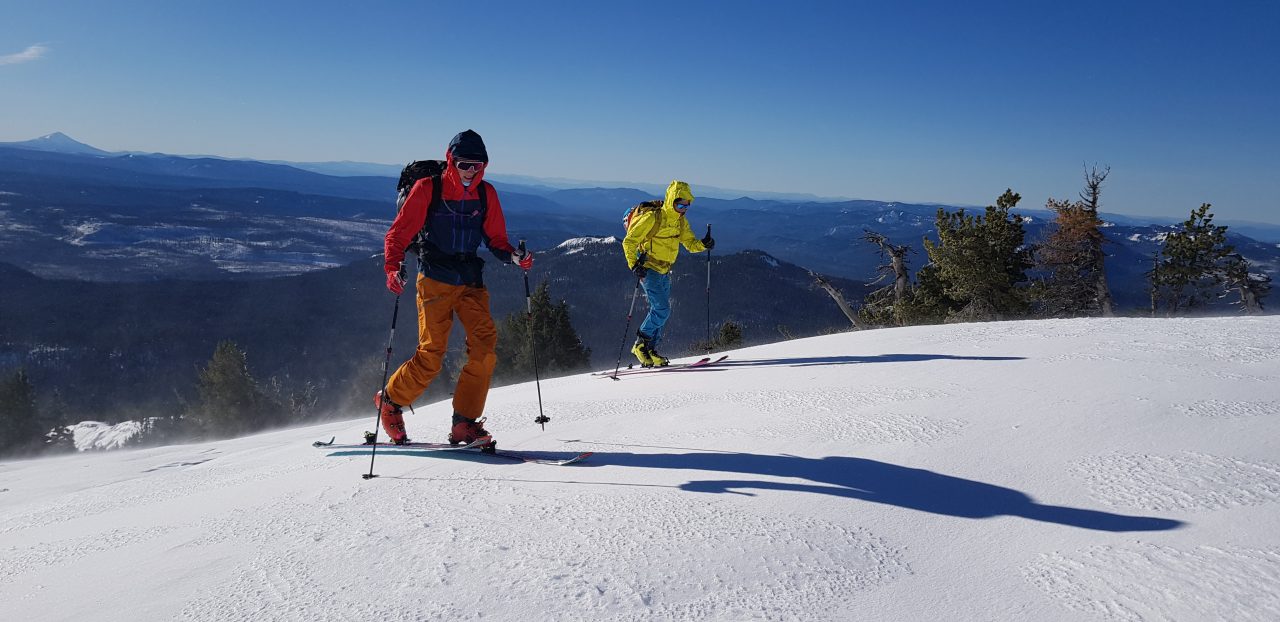
Residing in “dry” climates the past two decades — I’ve eschewed heavy-duty Gore-Tex products. Even after spending considerable time in high alpine snowstorms, and mid-summer rain, I’ve functioned perfectly fine. My only go-to rule for inclement weather gear is this – if the weather looks anything other than high-pressure and bluebird – no down. I’ve kept it basic when the sky spits precip. I rely on synthetic insulation topped with a feather-light windbreaker. (Essentially a highly tailored piece of rip-stop nylon.)
The reality of the situation is this: it still gets wet and dreary in the high desert. And places like Bend, Oregon have more than their share of wet days. Places like Mount Bachelor and Meissner Nordic sit nearly on the crest of the transition zone from wet Westside Cascades to drier Eastside. The gigs up. Believe half the hype, it’s not always sunny in places like Bend. With a busy life of work and kids, I ski during finite windows of time. I expect to ski in the rain or on wet-snow days that soak gear.
In my quest for self-improvement, twenty years since I illogically swore off Gore-Tex, I decided to try again.
I looked around for a dual-purpose lightweight and weatherproof jacket. One suitable for snowy ski tours and breathable enough to wear cross-country skiing when it rains, drizzles, or “sno-rains”.
Gore-Tex, it turns out, comes in many iterations. I was directed towards Gore-Tex Active 2 fabric, a more breathable version of the fabled three-layer fabric. Of the scores of options out there, Norrøna, a Norway-based designer of technical outerwear had an option.

The Norrøna lyngen Gore-Tex jacket appeared to check all the boxes. We’ll get to this in a bit, but the jacket is a highly engineered garment, designed for high output activities in inclement weather. Originally crafted for ski-touring, the lyngen seemed dialed for rain-soaked cross-country skiing too.
Since we are talking high-output, let’s get right to the jacket’s “breathable” attributes. The torso (front and back) are constructed from Gore-Tex Active 2, the most breathable of the Gore-Tex line of fabrics. With a RET (Resistance to Evaporative Heat Transfer) rating of 4, the lyngen sits in the sweet spot (0-6) in terms of breathability ratings. In contrast, the war-horse of Gore-Tex fabrics, Gore-Tex Pro, boasts a RET of 9. The lower the RET value, the more breathable.
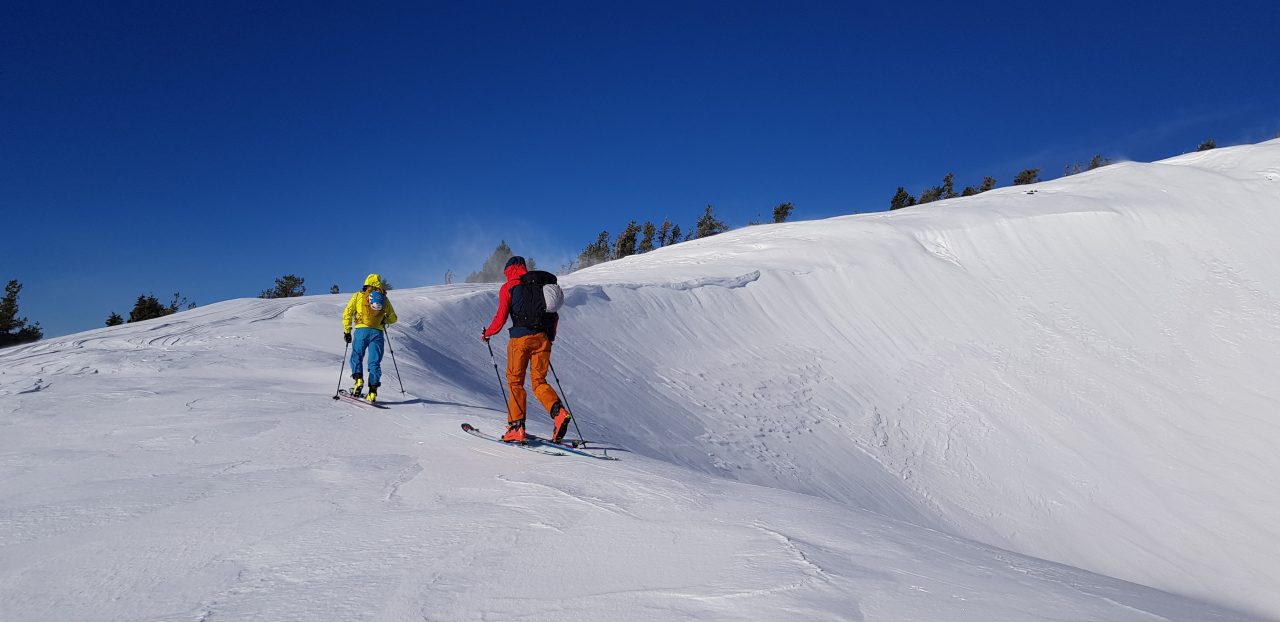

The top of the arms and shoulders feature Gore-Tex C fabric, a slightly less breathable (RET 6) but more durable construction on the jacket’s high-wear surfaces.
Some outdoorsy folks are bothered by the audible “crinkly” sound made by fabrics like GoreTex Pro. The fabric on the lyngen, for what it’s worth, does not “crinkle”. Your silent sport endeavor will not be compromised by a sound similar to rummaging through a bag of chips. And next to skin, the fabric feels like durable cotton.
The lyngen offers two more features maximizing breathability by shedding heat during exercise. First, generous pit zips extend from the elbow to the lower torso. The pit zips are two-way, meaning you can unzip from both the elbow and the torso to fine-tune the venting.
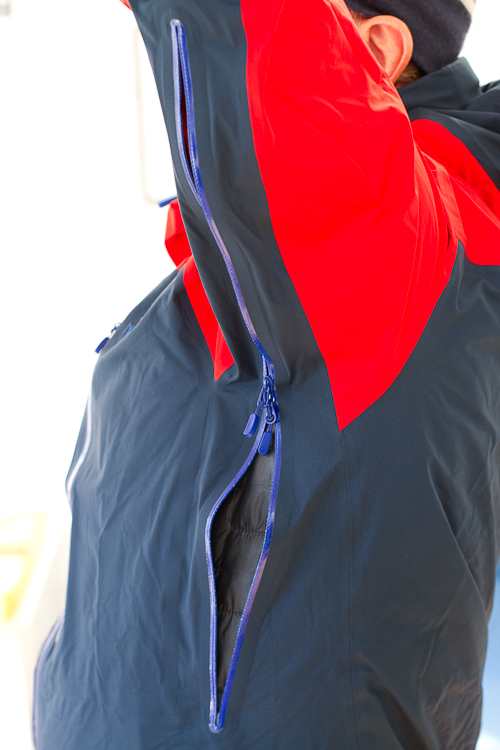
I love pit zips but understand they are not for everyone. My main ski touring partner claims if a jacket features pit zips to shed heat, then it is poorly designed. He owns, by last count, two Gore-Tex jackets, two alpine oriented soft-shells, and two lightweight coated nylon shells. In other words, a jacket quiver.
Pit zips, in my opinion, broaden a jacket’s functionality. In the case of the lyngen, they do exactly that. Zip them up when you need/want weatherproofing and heat retention and presto, you’re sealed up. Feeling like the temps are rising while skiing uphill or gently striding an incline, the opened pit zips work wonders. They dump heat. And they dump it fast.
So far, the engineering of the lyngen, beyond the generous length of the pit zips, is quotidian for a lightweight and high end alpine oriented Gore-Tex piece. Taped Gore-Tex seams, weatherproof zippers, a helmet friendly hood, and a simple drawcord for the waist are timeless finishes.
Things get interesting when it comes to the main front zipper. Running along the length of the front are two zipper options — one is the normal zipper entombing you from the elements. The other zipper, running an inch or so to the right, offers another option to dump heat. When that zipper is used, running from below your chin to your waist is a mesh vent resembling a length of high-tech and robust mosquito netting.
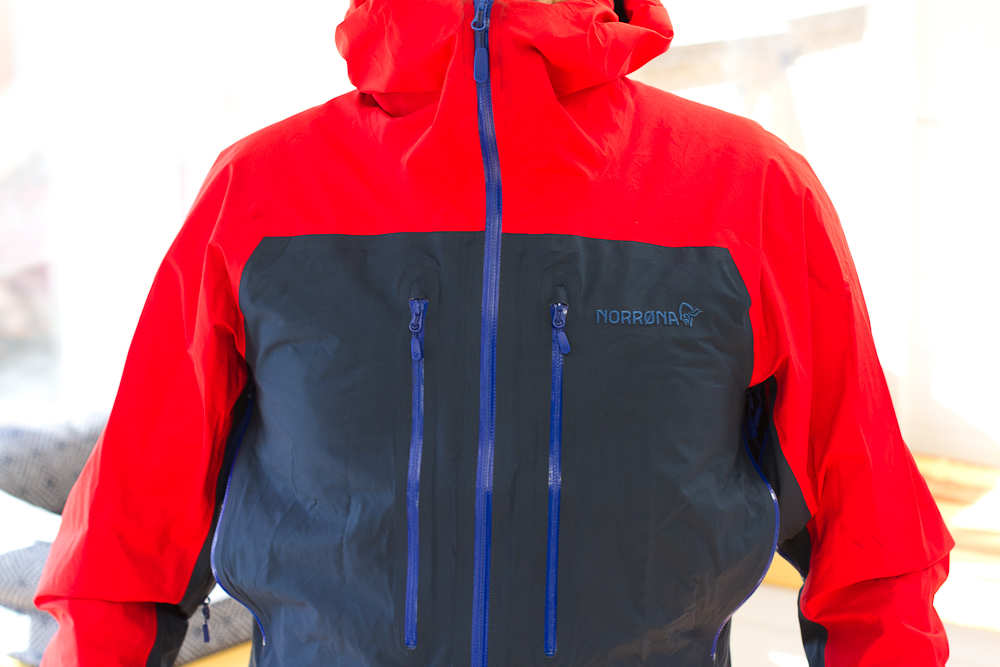
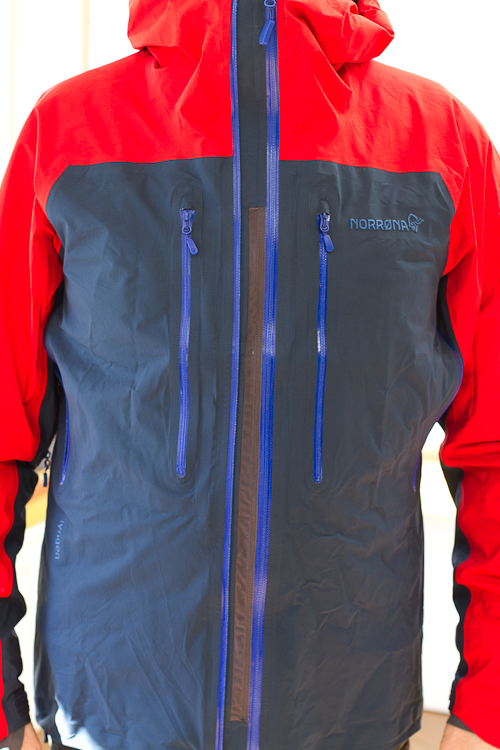
Out of the box, the full-length mesh seems gimmicky. The ground truth reveals an innovative means to enhance breathability and provide a dose of cool air when descending or when the wind kicks up. Unless it’s 20 degrees Fahrenheit or lower, I use the mesh front-zip option when ski touring or cross-country skiing. The feature adds a bit more complexity to the jacket, yet its functionality reigns.
Another aspect of the lyngen initially seemed over-engineered. Each sleeve has what is called a hand gaiter – a lightweight piece of Gore-Tex sealing the elements out of the sleeve. We know gaiters around boots in winter can keep snow from infiltrating boot liners. Similarly, the hand gaiter is designed to keep nasty weather, think water, from entering the sleeve. The gaiters are optional. You can simply push your hand through the sleeve and pop your hand out like any other jacket. Or, you can slot your thumb through a small hole and engage the hand gaiter.
Ski-touring, my hand gaiters are engaged. Again, proving my judgmental folly, it turns out the hand gaiters are elegantly engineered and another layer of protection and warmth when ski touring or pulling skins off at transitions.
The sleeves, generous in length, also include velcro closures.
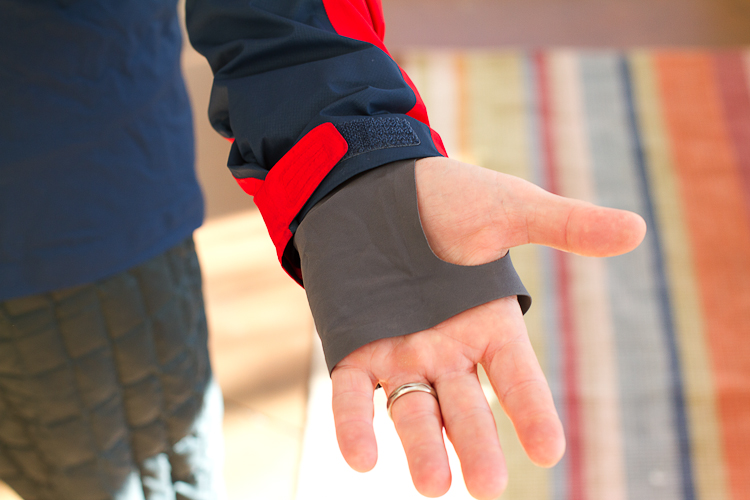
If you want to hammer intervals skiing in the rain while wearing the lyngen, even with pit zips open, you’ll heat up. No Gore-Tex jacket has solved that heat dump conundrum. But if you want simply ski in the rain, level 1-2, with the occasional speed burst, you’ll be dry and comfortable.
I tend to run cold, but I do embrace the ethos of starting cold when exercising in the winter. Burning calories cross-country skiing or skiing uphill will warm you fast. Wearing a light poly-pro t-shirt and Patagonia R1 hoody under the lyngen can be overkill if you are pushing the tempo. Cross-country skiing in the rain with temps hovering near 32 degrees, the lyngen over a light poly-pro shirt rings the bell.
The lyngen is light, at approximately 320 grams or ¾ of a pound, for a full-featured alpine worthy Gore-Tex jacket. If you want something light yet weatherproof and breathable with a minimal weight penalty, the lyngen meets weight weeny scrutiny.
For comparison, the Patagonia Triolet Gore-Tex jacket, featuring Gore-Tex’s basic 3-ply membrane weighs 550 g (19.4 oz). The Patagonia Pluma, which uses Gore-Tex Pro fabric, weighs 414 g (14.6 oz).
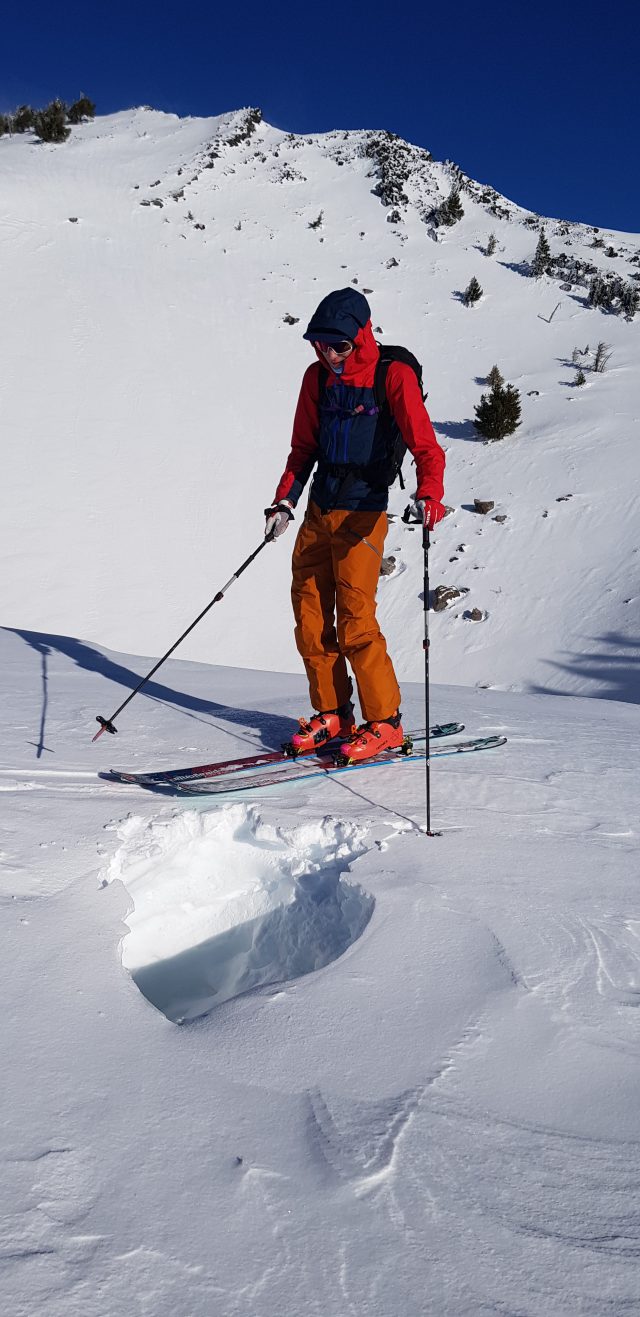
The lyngen features two generous and weatherproof exterior chest pockets and an internal pocket roomy enough for keys and a phone.
The real downside to this piece is getting over the sticker shock. No matter how you look at it, the lyngen is pricey. It retails for $599.00. The price will certainly make one second guess the need for high-end Gore-Tex garments. I tend to keep outdoor pieces I like for years. Duct-tape, Tenacious Tape, dental floss and a needle are your best friends when it comes to technical clothing and longevity. I’ve now banged around in the lyngen for three months. The long-term worthiness appears to be there as it remains a hardened mountain piece. The return on investment for your cash, dry under layers and a stable core temperature might be worth your Kroners. It’s windproof, weatherproof, and breathable at moderate levels of exertion.
Norrøna calls the sizing of the lyngen a “technical fit”. At 5’10” and 155 pounds, the fit is athletic. But it is roomy enough to layer insulation underneath. On cold-cold days, a thin base layer, a hoody like the R-1, and even a trim fit puffy all fit under the medium size lyngen with no reduced mobility. The cut, like the engineering, seems perfect.
Maybe you already spent $$$$ on diversifying the ski quiver last season. Maybe you seek that jack of all trades Gore-Tex beauty that you’re more than likely to wear during your more adventure-oriented endeavors. So far, the lyngen has proven a quiver of one technical hard shell. And, if you are keen on cross-country skiing when you are guaranteed to get wet, the lyngen is a no brainer.
Jason Albert
Jason lives in Bend, Ore., and can often be seen chasing his two boys around town. He’s a self-proclaimed audio geek. That all started back in the early 1990s when he convinced a naive public radio editor he should report a story from Alaska’s, Ruth Gorge. Now, Jason’s common companion is his field-recording gear.

